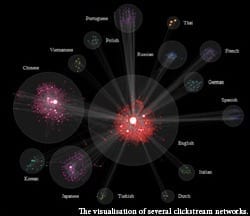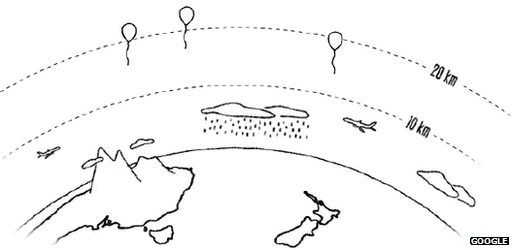
“How are those men, thus thrown out of employ to provide for their families?”
In 1786, the cloth workers of Leeds, a wool-industry center in northern England, issued a protest against the growing use of “scribbling” machines, which were taking over a task formerly performed by skilled labor. “How are those men, thus thrown out of employ to provide for their families?” asked the petitioners. “And what are they to put their children apprentice to?”
Those weren’t foolish questions. Mechanization eventually — that is, after a couple of generations — led to a broad rise in British living standards. But it’s far from clear whether typical workers reaped any benefits during the early stages of the Industrial Revolution; many workers were clearly hurt. And often the workers hurt most were those who had, with effort, acquired valuable skills — only to find those skills suddenly devalued.
So are we living in another such era? And, if we are, what are we going to do about it?
Until recently, the conventional wisdom about the effects of technology on workers was, in a way, comforting. Clearly, many workers weren’t sharing fully — or, in many cases, at all — in the benefits of rising productivity; instead, the bulk of the gains were going to a minority of the work force. But this, the story went, was because modern technology was raising the demand for highly educated workers while reducing the demand for less educated workers. And the solution was more education.
Now, there were always problems with this story. Notably, while it could account for a rising gap in wages between those with college degrees and those without, it couldn’t explain why a small group — the famous “one percent” — was experiencing much bigger gains than highly educated workers in general. Still, there may have been something to this story a decade ago.
Today, however, a much darker picture of the effects of technology on labor is emerging. In this picture, highly educated workers are as likely as less educated workers to find themselves displaced and devalued, and pushing for more education may create as many problems as it solves.
I’ve noted before that the nature of rising inequality in America changed around 2000. Until then, it was all about worker versus worker; the distribution of income between labor and capital — between wages and profits, if you like — had been stable for decades. Since then, however, labor’s share of the pie has fallen sharply. As it turns out, this is not a uniquely American phenomenon. A new report from the International Labor Organization points out that the same thing has been happening in many other countries, which is what you’d expect to see if global technological trends were turning against workers.
And some of those turns may well be sudden. The McKinsey Global Institute recently released a report on a dozen major new technologies that it considers likely to be “disruptive,” upsetting existing market and social arrangements.
The Latest Bing News on:
Effects of technology on workers
- A meeting of the mayors: Spokane’s Lisa Brown and Seattle’s Bruce Harrell on the impact of innovationon May 8, 2024 at 3:32 pm
Seattle Mayor Bruce Harrell, left, and Spokane Mayor Lisa Brown at the Technology Alliance State of Technology annual luncheon in Seattle on May 3.
- Sam Altman doesn't think we are worried enough about how AI will impact the economyon May 8, 2024 at 11:29 am
OpenAI CEO Sam Altman is "most worried" about the rate at which AI will impact the economy, he said on a Brookings panel.
- Workers are secretly using AI on important tasks over fears it makes them look replaceable, new Microsoft and LinkedIn research findson May 8, 2024 at 5:00 am
Almost half of professionals are worried AI will replace their jobs and are considering quitting in the year ahead, a new Microsoft and LinkedIn report finds.
- Understanding the Impact of Technology on Workplace Safetyon May 8, 2024 at 2:46 am
The integration of technology into the workplace has transformed how safety is managed across various industries. From manufacturing floors to remote oil fields, technological advancements have ...
- What Is the Real Impact of Flexible Work on Mental Health?on April 30, 2024 at 8:16 am
Flexible work arrangements have been linked to reduced mental health issues. Flexibility in work correlates with improved autonomy and job satisfaction. Research advocates reevaluating work ...
- Uncovering the impact of technology on lawon April 25, 2024 at 8:01 am
When considering the industries that emerging technology can affect, the field of law practice is the least likely one to come to mind.
- The Impact of Artificial Intelligence on Job Market Trendson April 25, 2024 at 3:49 am
Are robots taking over our jobs? Will artificial intelligence make human labor obsolete? These questions have been wandering over the job market for years, sparking debates and fears about the future ...
- Navigating the Impact of AI on the Future of Work A Collaborative Approach by Tech Titanson April 5, 2024 at 4:10 am
The consortium’s focus on exploring AI’s impact on information and communication ... a proactive approach to shaping the future of work. As technology continues to reshape the economic ...
- The Effects of Minimum Wage on Workerson July 21, 2018 at 4:37 am
Designed to help low-wage workers make what the state considers to be a fair wage, the minimum wage law has positive and negative effects on workers. Without a minimum wage, low-skilled workers ...
- The Effects of Technology on Work Ethicson February 20, 2012 at 2:30 pm
The effects of technology on work ethics move at a similar pace with employers moving to establish ethical boundaries that seem to infringe on employee privacy rights and restrict communication ...
The Latest Google Headlines on:
Effects of technology on workers
[google_news title=”” keyword=”effects of technology on workers” num_posts=”10″ blurb_length=”0″ show_thumb=”left”]
The Latest Bing News on:
Rising inequality in America
- Experts Wonder, Is America Truly in Decline?on May 8, 2024 at 12:00 am
Reports of America's death have been greatly exaggerated for decades ... In the U.S., the Progressive movement addressed "rising inequality, social tensions over workers' rights, the environmental and ...
- Income inequality high or rising in 60 percent of countries with loans from IMF and World Bankon April 14, 2024 at 5:00 pm
Building: IMF HQ2. Room: HQ2-03B-768B Lecture Room. Data for Oxfam’s calculations on rising or high inequality are from the World Bank’s Poverty and Inequality Platform. Inequality data are available ...
- America’s epidemic of chronic illness is killing us too soonon October 3, 2023 at 4:05 am
The best barometer of rising inequality in America is no longer income. It is life itself. Wealth inequality in America is growing, but The Post found that the death gap — the difference in life ...
- Zoning, Housing Regulation, And America’s Racial Inequalityon June 30, 2021 at 5:43 pm
But they are having an especially pronounced impact on Black families, where rising prices compound the historic discrimination they’ve always faced in American housing markets. Home ownership ...
- Inequality in the Time of COVID-19on June 2, 2021 at 9:48 am
For the moment, though, it certainly seems plausible that inequality within many countries is on the increase, given evidence of rising poverty and rising billionaire ... much more rapidly than India, ...
- U.S. Billionaires Could Give $3,400 Stimulus Checks To 331 Million Americans Using Only Their Increase In Wealth Since March 2020on February 8, 2021 at 6:43 am
“With their $1.1 trillion increase in wealth since March, America's 660 billionaires could ... the Institute for Policy Studies’ Program on Inequality. The debate over stimulus check amounts ...
- Declining Inequality in Latin America: A Decade of Progress?on January 14, 2020 at 11:39 pm
However, after rising in the 1990s, inequality in Latin America declined between 2000 and 2007. Of the seventeen countries for which comparable data are available, twelve experienced a decline in ...
- Global inequality is on the rise – but at vastly different rates across the worldon December 14, 2017 at 3:40 am
Inequality is rising almost everywhere across the world – that’s ... to show us that the Middle East region may be even more unequal than Central and South America, which have long been held up as ...
- Inequality and the Fracturing of American Democracyon May 2, 2017 at 1:00 am
American democracy is under strain ... cite the consumption of these assets to argue that concerns about rising inequality are irrational.) The logical flaw in this theory is that there is ...
- In Equality, We Truston February 28, 2017 at 9:38 am
Rising economic inequality is one reason people may be less likely to ... The analysis uses data from the American National Election Survey for the United States and the European Social Survey for ...
The Latest Google Headlines on:
Rising inequality in America
[google_news title=”” keyword=”rising inequality in America” num_posts=”10″ blurb_length=”0″ show_thumb=”left”]










